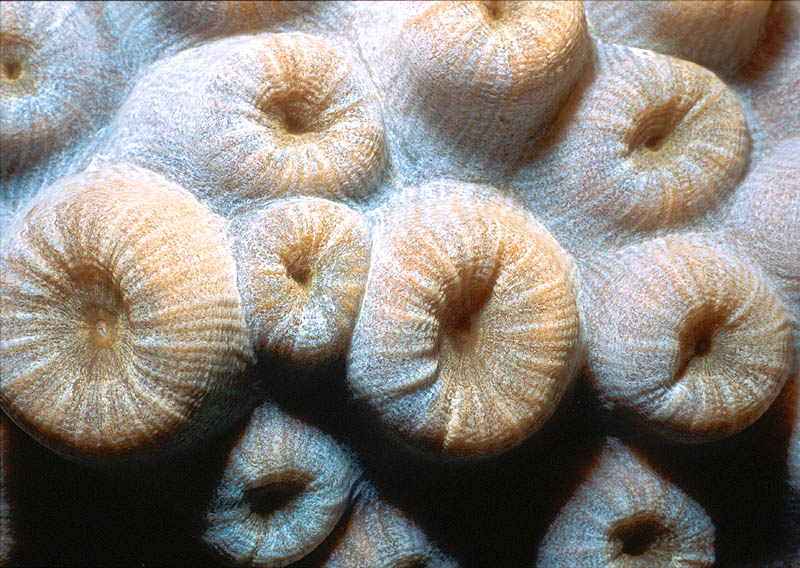
Volume 5 Number 4
Star Corals by Day at Greenhouse Reef, Cayman Brac


Volume 5 Number 4
Star Corals by Day at Greenhouse Reef, Cayman Brac

By day, Star Coral polyps hide inside their skeletons. This picture shows an ultra-closeup of some Great Star Coral polyps during the daytime at Greenhouse Reef off the north shore of Cayman Brac.
As we've learned on other ReefNews web pages, Corals are the building blocks of the coral reefs. All other coral-reef animals depend on corals. They depend on corals for energy and food, and for shelter and protection. Corals remove calcium-based minerals from the ocean water and use these minerals to build a foundation that is very much like a skeleton. The animals live on the outer surface of this skeleton. The corals can remove enough minerals so that the skeleton continues to grow each year. Corals like these Great Star Corals can build about 1/4 inch of skeleton each year.
In this picture, each animal is one ring, sort of like a doughnut cut in half. Each individual animal, called a polyp (say, "PAH-lip") lives in the center of the ring. These coral polyps only come out at night. By day, they hide down in holes in their skeletons. Click here to see a picture of Great Star Corals at night. The corals in this picture were enormous, for corals that is. The corals in this picture were over 1/2 inch in diameter.
ReefNews photographer Jonathan Dowell took this photo using a Nikonos V camera with a 28 mm lens and a 1:2 macro extension tube with a Nikon SB 105 strobe. NO CORALS WERE HARMED TO MAKE THIS PHOTOGRAPH. Jonathan was extremely careful not to bump into the coral polyps with the camera or the extension-tube framer. He found a bump on the surface of the coral skeleton, so the bumps on the coral skeleton would reach out into the framer without having to touch any of them.
--------------------
e-ReefNews and embedded illustrations are
Copyright © 2001, 2003, ReefNews, Inc.
ReefNews ® is a registered trademark of ReefNews, Inc.